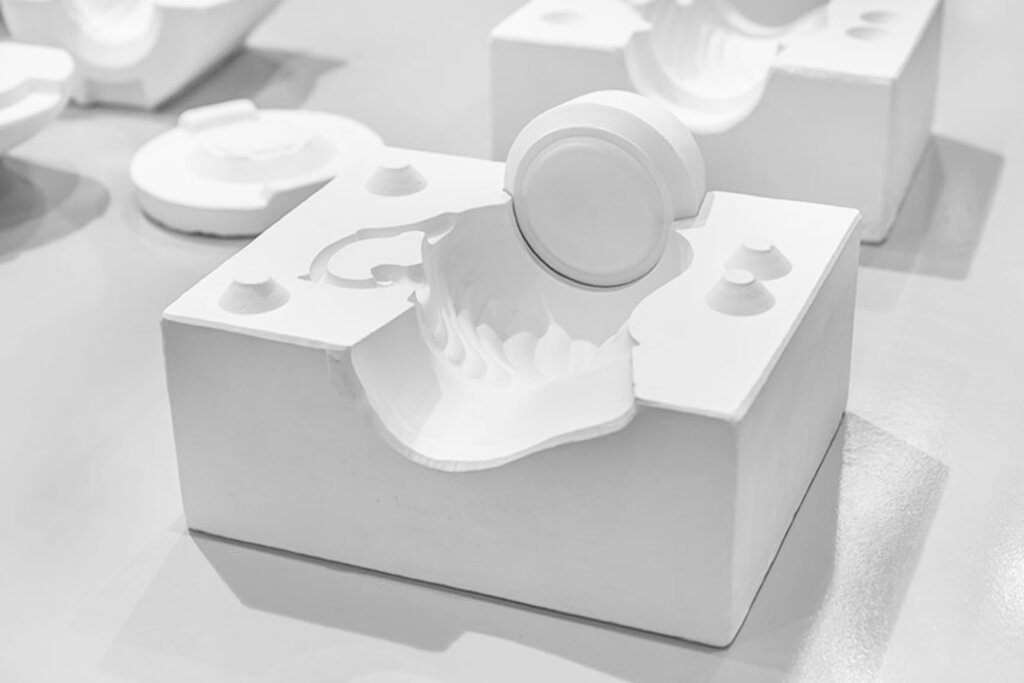

Welding, the fusion of materials through heat and precision, stands as a cornerstone of modern manufacturing and metal fabrication. It’s more than just joining metals; it’s an intricate dance between craftsmanship, technology, and innovation that has shaped industries, infrastructure, and our everyday lives.
Table of Contents
The History of Welding

The history of welding stretches across millennia, beginning with humble yet ingenious practices that laid the groundwork for the sophisticated techniques we employ today. One of the earliest instances of welding dates back to the Bronze Age, where ancient civilizations, including the Egyptians and Sumerians, discovered the art of forge welding.
They heated metals until they reached a malleable state and then hammered them together, creating solid joints. This primitive form of welding marked the genesis of a process that would evolve through the ages.
In the 19th century, significant advancements propelled welding into a more recognizable form. Sir Humphry Davy, in the early 1800s, discovered the electric arc, a crucial breakthrough that set the stage for modern welding. This discovery laid the groundwork for subsequent innovations, paving the way for the development of various welding techniques that harnessed electricity to generate heat for joining metals.
From there, the 20th century witnessed an explosion of progress in welding technology, with the emergence of gas welding, the introduction of new welding electrodes, and the refinement of techniques like TIG (Tungsten Inert Gas) and MIG (Metal Inert Gas) welding, revolutionizing industries and construction practices worldwide.
The Welding Process
Welding is a fabrication process that involves joining materials, typically metals, by melting the workpieces and adding a filler material to create a joint end. The process requires the application of extreme heat, which can be generated through various methods such as electricity, gas flames, lasers, or friction. Here’s a detailed breakdown of the general welding process:
1. Preparation:
- Cleaning: Before welding, the surfaces of the materials to be joined must be thoroughly cleaned to remove any dirt, rust, paint, or contaminants. Clean surfaces ensure better fusion and stronger welds.
- Fit-up: Proper alignment and fit-up of the materials are crucial. This involves cutting, shaping, and positioning the workpieces to create a joint that allows for the welding process.
2. Application of Heat:
- Heat Source: Welding employs different sources of heat, such as an electric arc, gas flame, laser, or even friction. The choice of heat source depends on the welding technique and the materials being welded.
- Melting: The heat source is applied to the joint area, raising the temperature until the base metals reach their melting points or become sufficiently malleable.
- Shielding Gas: In some processes like MIG (Metal Inert Gas) or TIG (Tungsten Inert Gas) welding, a shielding gas is used to protect the weld pool from atmospheric contamination, ensuring a clean and strong weld.
3. Formation of the Weld Pool:
- Molten Pool: As the base metals reach the desired temperature, they melt or become soft enough to form a molten pool at the joint area.
- Filler Material (if applicable): In certain welding techniques, a filler material—such as a welding rod or wire—is introduced into the molten pool to reinforce the joint and enhance its strength. The filler material melts and integrates with the base metals.
4. Solidification and Cooling:
- Controlled Cooling: Once the welding is completed, the heat source is removed, allowing the molten metal to solidify and form a solid joint.
- Post-Welding Processes: Some welds may require additional processes like stress-relieving, grinding, or other finishing techniques to achieve the desired appearance and properties.
Common Welding Techniques
Welding is a versatile process employed across industries, from manufacturing and construction to consumer products and industrial storage. The choice of welding technique and parameters depends on factors like the type of materials, joint design, required strength, and application-specific needs.
MIG Welding (Gas Metal Arc Welding – GMAW)
- Process: MIG welding uses a continuous solid wire electrode fed through a welding gun, along with a shielding gas (typically a mixture of argon and carbon dioxide) to protect the weld area from atmospheric contamination.
- Advantages: Gas metal arc welding is relatively easy to learn and offers high welding speeds. MIG welding is versatile and suitable for a wide range of materials, including stainless steel, aluminum, and mild steel.
- Applications: Gas metal arc welding is commonly used in automotive, fabrication, and construction industries due to its efficiency and versatility.
TIG Welding (Gas Tungsten Arc Welding – GTAW)
- Process: TIG welding uses a non-consumable tungsten electrode that produces the arc, along with a separate filler material if needed. A shielding gas (argon or helium) protects the weld area, providing a clean and precise weld.
- Advantages: Known for producing high-quality, clean welds without spatter. It offers excellent control over the welding process, making it suitable for intricate and precise work.
- Applications: Often used in industries requiring high precision and aesthetic welds, such as aerospace, automotive, and artwork fabrication.
Stick Welding (Shielded Metal Arc Welding – SMAW)
- Process: Stick welding involves a consumable electrode coated in a flux that provides both shielding and creates slag for protection. The electrode is manually fed into the weld pool, and the flux coating provides a shield against atmospheric contamination.
- Advantages: Portable and versatile, suitable for outdoor and on-site welding. Shielded metal arc welding can be used on thicker materials and in adverse conditions where other methods might struggle.
- Applications: Widely used in construction, maintenance, and repair work, particularly when working with steel and iron.
Flux-Cored Arc Welding (FCAW)
- Process: Similar to MIG welding, but FCAW uses a tubular wire filled with flux instead of a solid wire and external shielding gas. The flux creates a protective gas shield around the weld, allowing it to be used in outdoor or windy conditions.
- Advantages: Offers high welding speeds and good penetration, suitable for welding thick materials. It’s versatile and can be used in various positions.
- Applications: Commonly used in construction, shipbuilding, and heavy equipment industries, especially for welding thick metals.
Submerged Arc Welding (SAW)
- Process: Submerged arc welding is a welding process that utilizes a granular flux and an electric arc to join metals.
- Advantages: It’s a highly efficient method, especially for welding thick materials in a single pass.
- Applications: Commonly used in the construction of shipbuilding, offshore platforms, pressure vessels, and heavy structural components.
Each welding technique has its strengths and is suited to specific applications based on factors like material type, thickness, required aesthetics, and environmental conditions. Mastering these techniques allows welders to adapt to various projects and achieve high-quality, structurally sound welds.
Commonly Used Materials

Welding involves joining materials, primarily metals, to create strong and durable bonds. Various types of metals and alloys are used in welding, each with its unique properties and applications. Here are some common materials used in welding:
Steel
- Carbon Steel: One of the most commonly welded metals, available in various grades with different carbon content.
- Stainless Steel: Known for its corrosion resistance, used in industries requiring hygiene and durability, such as food processing and medical equipment.
Aluminum
- Aluminum Alloys: Lightweight and corrosion-resistant, widely used in aerospace, automotive, and marine applications. Read our guide on welding aluminum.
- Aluminum-Magnesium Alloys: Offer improved strength and weldability compared to pure aluminum.
Copper and Copper Alloys
- Pure Copper: Used in electrical applications due to its excellent conductivity.
- Bronze and Brass: Copper alloys with zinc and other elements, used in various industries for their strength and corrosion resistance.
Nickel and Nickel Alloys
- Nickel-based Alloys: Known for high-temperature resistance and corrosion resistance, used in aerospace, chemical, and nuclear industries.
Titanium
- Titanium Alloys: Known for their high strength-to-weight ratio and corrosion resistance, used in aerospace, medical implants, and marine applications.
Cast Iron
- Gray Cast Iron: Contains graphite flakes, often used in engine components and machinery.
- Ductile Cast Iron: Has a more flexible and durable structure compared to gray cast iron, used in parts requiring high strength.
Other Metals and Alloys
- Magnesium Alloys: Lightweight materials used in aerospace and automotive applications.
- Refractory Metals (Tungsten, Molybdenum): Known for their high melting points, used in high-temperature applications like aerospace and electronics.
Welding Consumables
Apart from the base metals, various welding consumables are utilized to aid the welding process:
- Electrodes: Consumable or non-consumable rods or wires used in welding to create the arc and add material to the weld pool.
- Filler Metals: Additional materials used to reinforce the weld joint or add specific properties to the welded area.
- Fluxes: Materials used in certain welding processes to create a protective atmosphere and remove impurities from the weld area.
The choice of materials for welding depends on factors such as the application, required strength, corrosion resistance, conductivity, and the welding technique employed. Each material and alloy has distinct characteristics that make it suitable for specific industries and applications.
Welding Applications

Welding is one of the most popular types of metal fabrication because of its strength and durability. Therefore, it plays a crucial role in a variety of industries and applications. Here are some examples of welding applications:
Industrial Storage
Welding plays a critical role in the fabrication of industrial storage solutions, ensuring durability, strength, and structural integrity in various storage systems such as pallet racking, shelving units, and metal bins.
Oil & Gas
The oil and gas industry relies significantly on welding for the fabrication and assembly of various critical components and infrastructure. Some products and components include valves, storage tanks, compressors, flanges, and more.
Heavy Equipment
welding is extensively used to fabricate and assemble various components integral to the construction, mining, agriculture, and transportation sectors. Examples of products include skid steer buckets, trailer components, and pallet forks.
Information Technology and Telecommunications
Welding is employed to fabricate and assemble various components for the telecommunication industry including aluminum fabricated instrument enclosures, cable supports, cabinets, and custom brackets.
Welding Technology and Advancements
Technological advancements in the welding industry have revolutionized processes, materials, and equipment, leading to improved efficiency, precision, and safety. Here are some key areas where technological innovations have made a significant impact:
Automation and Robotics
- Robotic Welding: Automation has expanded in welding, with robotic systems performing repetitive tasks with high accuracy, speed, and consistency. These robots are programmed to handle complex welds, increasing productivity and reducing human error.
Advanced Welding Processes
- Laser Welding: Utilizing high-powered lasers for precise and fast welding, particularly in industries requiring high accuracy, such as automotive and aerospace.
- Friction Stir Welding (FSW): Joining materials without melting them, reducing distortion and maintaining material properties, often used in aerospace and marine applications.
- Electron Beam Welding (EBW): Using a focused beam of electrons for high-energy welding, commonly employed in aerospace and high-tech industries for precise and deep welds.
Innovative Materials and Alloys
- Advanced Alloys: Development of new materials and alloys that offer enhanced strength, corrosion resistance, and other properties suitable for specific applications, requiring specialized welding techniques.
- High-Strength Steels: Welding methods and filler materials adapted for high-strength steels used in lightweight and durable structures, notably in automotive manufacturing.
Start a Welding Project Today
The Federal Group USA is a leading force in the realm of welding and custom metal fabrication. We are committed to delivering excellence and innovation in every project.
Contact us today for a free quote.

